
BioDent uses Reference Point Indentation
Reference Point Indentation sets a local reference point immediately next to the location of measurement with a Reference Probe. The Reference Probe can penetrate other materials to reach the region of interest. This allows samples to be measured with minimal preparation and even measurement in vivo, through soft tissue without exposing the bone surface.
Inside the Reference Probe, a Test Probe is connected to a force sensor and a displacement sensor. While the Test Probe is retracted within the Reference Probe, it does not sense any force. A force generator inside the BioDent drives the Test Probe into the sample and measures the force experienced by the Test Probe as well as the distance the Test Probe travels.

Loading Phase
The Test Probe is pushed through the Reference Probe into the sample. A force and distance curve is captured by the software.

Holding Phase
Once a user-defined Indentation Force is reached, the BioDent holds a constant force on the sample for 1/3 of the measurement cycle. For viscoelastic materials like bone, the Test Probe will sink in, or creep, during this holding period.
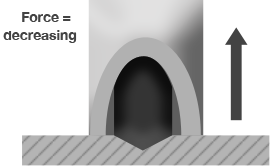
Unloading Phase
After the holding phase, the force is reduced back to zero on the Test Probe. In viscoelastic materials like bone, both plastic and elastic deformation occurs. Once the Test Probe is experiencing zero force, the next cycle begins.
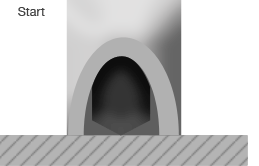
Unrecovered Deformation
Once a sample is measured, there is a quantifiable amount of unrecovered deformation at the measurement site. This is quantified as the energy dissipated by the sample in the form of plastic deformation.
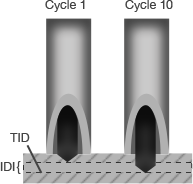
Dynamic Measurement
Cyclic indentation provides insight into viscoelastic properties that are rate and load dependent. By comparing results between individual indentation cycles at the same location, new mechanical parameters can be calculated.
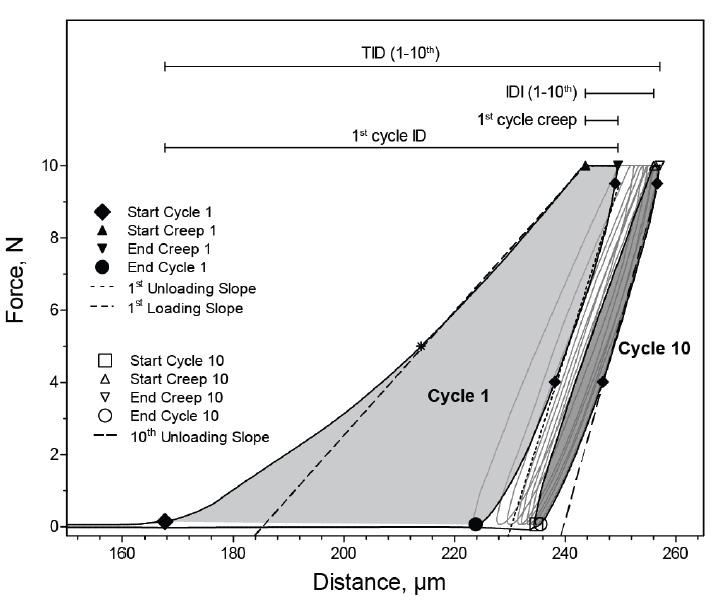
Data Rich Measurements
Each measurement is displayed as a Force-Distance (FD) curve. FD curves show Force (N) on the y-axis and Distance (µm) on the x-axis. Each FD curve has 4 distinct points: Touchdown, Peak, Retraction, and Liftoff. These points are used to calculate various properties, like Indentation Distance Increase (IDI), Total Indentation Distance (TID), Energy Dissipated (ED), and Loading and Unloading Slopes (LS & US).
A lot of information is captured with FD curves and BioDent comes pre-programmed to calculate 9 commonly used parameters. In addition, all raw data is saved for more advanced analysis.
Click here to learn more about what BioDent calculates.
Intuitive Software Interface
The BioDent software is designed to make the measurement experience simple and fast. Each measurement is displayed in real time during measurement as a Force-Distance curve, with calculated results appearing below. Dozens of samples can be measured in a short period of time. The software saves all data immediately and provides additional advanced analysis on the fly.
Data is saved in tab delimited text format for easy import into any statistical program. This includes raw Force-Distance curve data as well as calculated outputs.

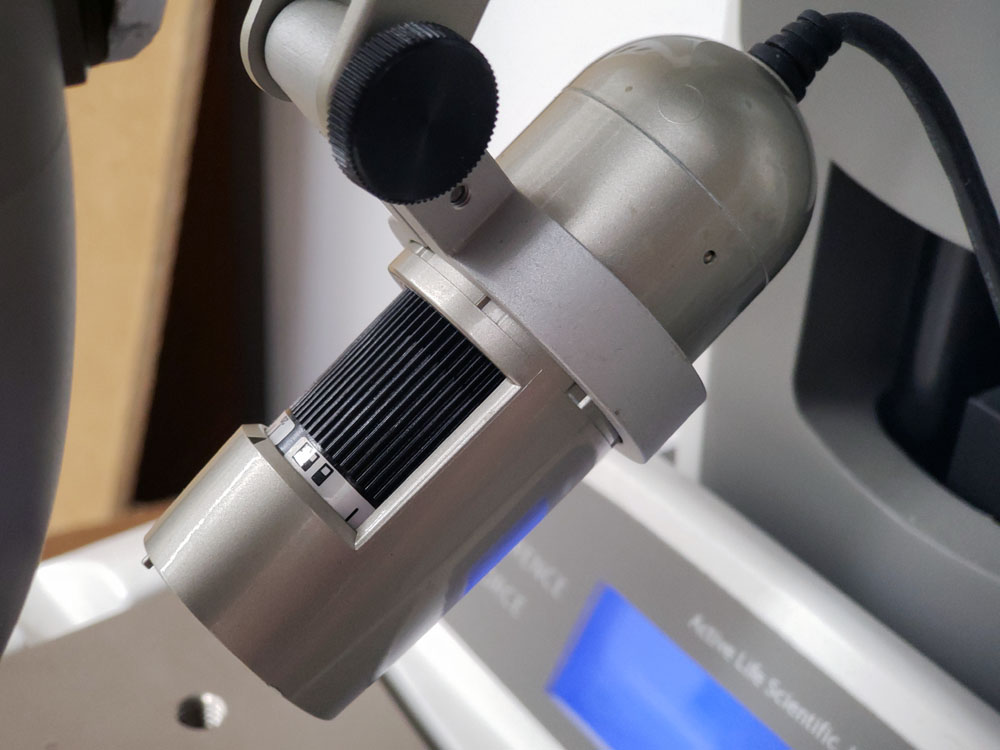
Digital Visualization System
Get a close look at your samples with a digital microscope.
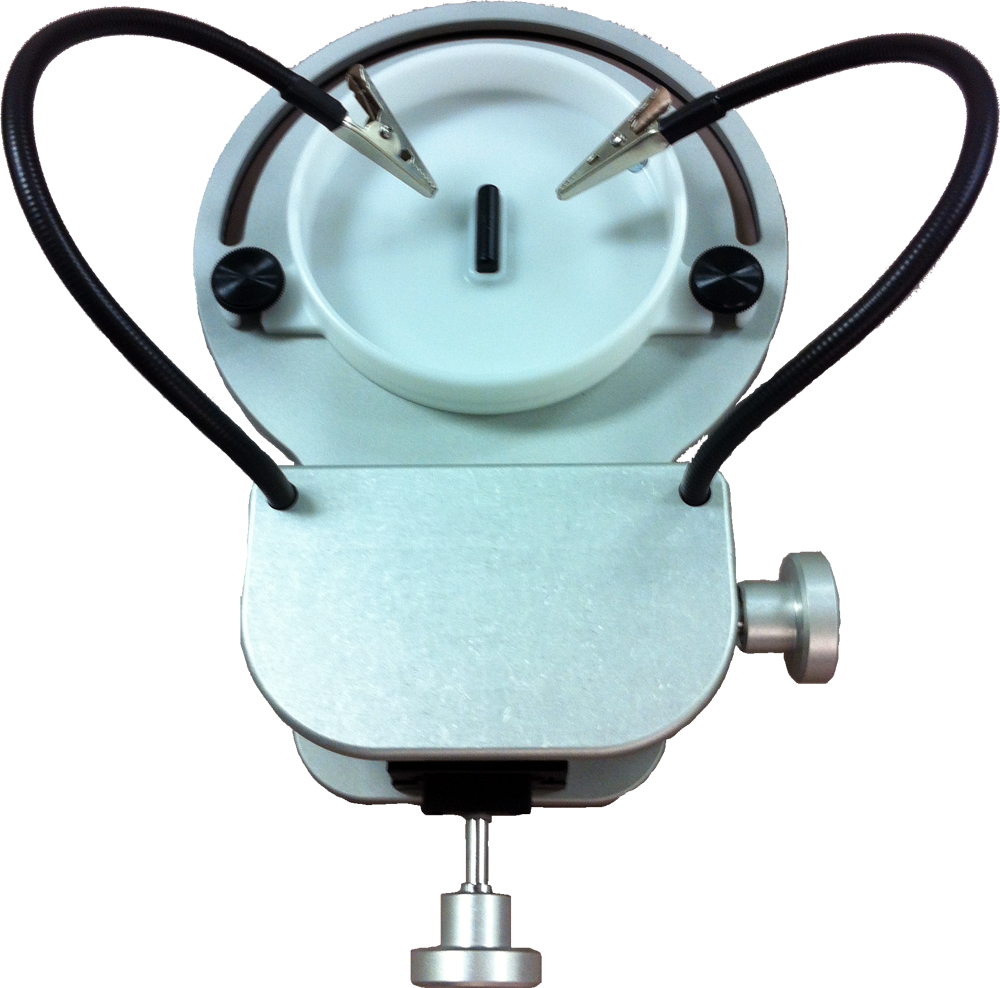
Ex Vivo Small Bone Stage
Sample holders are available for your particular application.

Soft Tissue Capability
Soft tissue measurement can be enabled for your BioDent.
Disposable Tip Assemblies

There are three types of BioDent tips: BP1, BP2, and BP3.
Each tip has the same Test Probe. Different Reference Probes should be used for different types of samples. Each tip can last for up to 150 measurements.
BP1 should be used for larger samples with a lot of soft tissue.
BP2 is the most commonly used Tip Assembly and is used for both ex vivo and in vivo samples.
BP3 should be used for ex vivo samples with little or no soft tissue.
 BP1 Tips have a sharp Reference Probe that helps penetrate through thick soft tissue. For example, porcine or equine models.
BP1 Tips have a sharp Reference Probe that helps penetrate through thick soft tissue. For example, porcine or equine models.
 BP2 Tips have a semi-sharp Reference Probe with a blunt end. This helps penetrate soft tissue while not damaging the bone. BP2 is ideal for in vivo measurement of small animal models or measurement on excised bone.
BP2 Tips have a semi-sharp Reference Probe with a blunt end. This helps penetrate soft tissue while not damaging the bone. BP2 is ideal for in vivo measurement of small animal models or measurement on excised bone.
 BP3 Tips have a flat concentric Reference Probe. These tips are best for very small, fragile samples or excised samples with no soft tissue.
BP3 Tips have a flat concentric Reference Probe. These tips are best for very small, fragile samples or excised samples with no soft tissue.
The Test Probe for all tips is the same: a 90° conical tip with a base diameter of 375µm.
Not sure if BioDent will work for you?
Reach out and ask us how BioDent might fit into your research.
